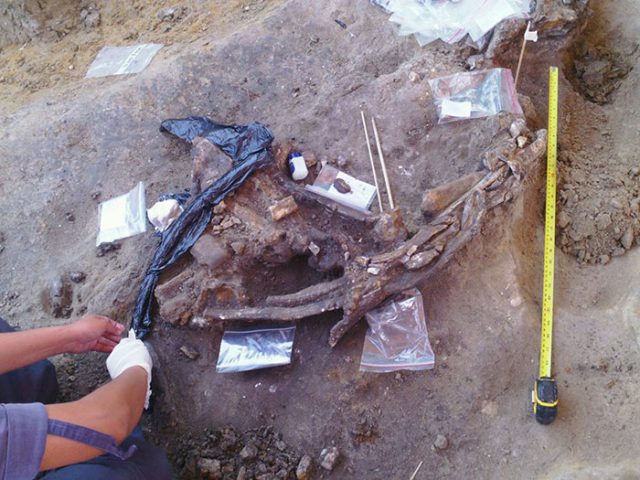
The discovery of 709,000 year-old evidence of human activity in a cave in Kalinga province has revived the discussion on who were the first inhabitants of the Philippine islands.
The National Museum proudly announced the discovery, billing it as the product of a collaborative archaeological effort helmed by researchers from different countries and institutions.
The study was completed in 2017 and the findings have just been released.
The findings on the archeological site, which include rare fossilized remains of the now-extinct Rhinoceros philippinensis and paleolithic butchery tools, have been published in a journal.
What has baffled the scientific community is that the uncovered site points to human activity predating the previous record holder by more than six hundred thousand years.
Prior to the discovery in Kalinga, the 67,000 year-old human fossils found inside Callao Cave in Cagayan last 2010 were regarded as the oldest recorded evidence of human activity in the Philippines.
Before “Callao Man” came “Tabon Man,” fossilized remains dated more than 20,000 years old, found in the cave system in Tabon, Palawan.
Who were the first Filipinos?
The mystery of who could have stepped on the Philippine islands so early in the history of man has drawn the curiosity of the public.
One user shared a theory that he believes goes against what has been taught at most schools: early migration to the Philippines proceeded downward from the north.
Another expressed pride in the impossibility that present-day Filipinos were descendants of an ancient race of dwellers.
Some countered the lack of evidence pointing to this hypothesis, suggesting that the present-day Filipinos may still likely be the descendants of Malay and Indochine dwellers from more recent centuries.
One user on Twitter proposed the idea that the culprit behind the prehistoric butchery scene may be an ancestor of modern-day homo sapiens: homo floresiensis, the hobbit-sized dwellers of Flores Island in Indonesia.
There is now scientific proof that there were early humans (not homo sapiens) in the Philippines 700,000 yrs ago.
These early humans cld have been the Homo floresiensis fr Indonesia, nicknamed "The Hobbit" bec of their size.
Also, the Philippines had rhinoceros.
A-MA-ZING! https://t.co/TGnr07zh9z— Mulan Rouge (@leirammai) May 3, 2018
National Geographic, in its article on the discovery, says that apart from homo floresiensis, the culprits could be either the denisovans, an extinct human species from Siberia, or homo erectus from the Southeast Asian region.
Recent discoveries from ancient Philippines
Much of the history of the Philippines before the coming of the Spanish in the 16th century remains a mystery. As such, the Philippines has relied on archaeological discoveries from recent years to get a picture of our past.
In 2009, replicas of the balangay — ancient ships used by seafarers from years ago dated as early as 320AD were built and tested for travel. The balangay, excavated in the ’70s revealed ancient Filipinos’ seafaring ways.
The Manunggul Jar discovered in Palawan in the 1960’s meanwhile revealed ancient Filipinos’ early craftsmanship and belief in life after death. The ancient burial jar was discovered in the same cave in Palawan where Tabon Man was discovered.









